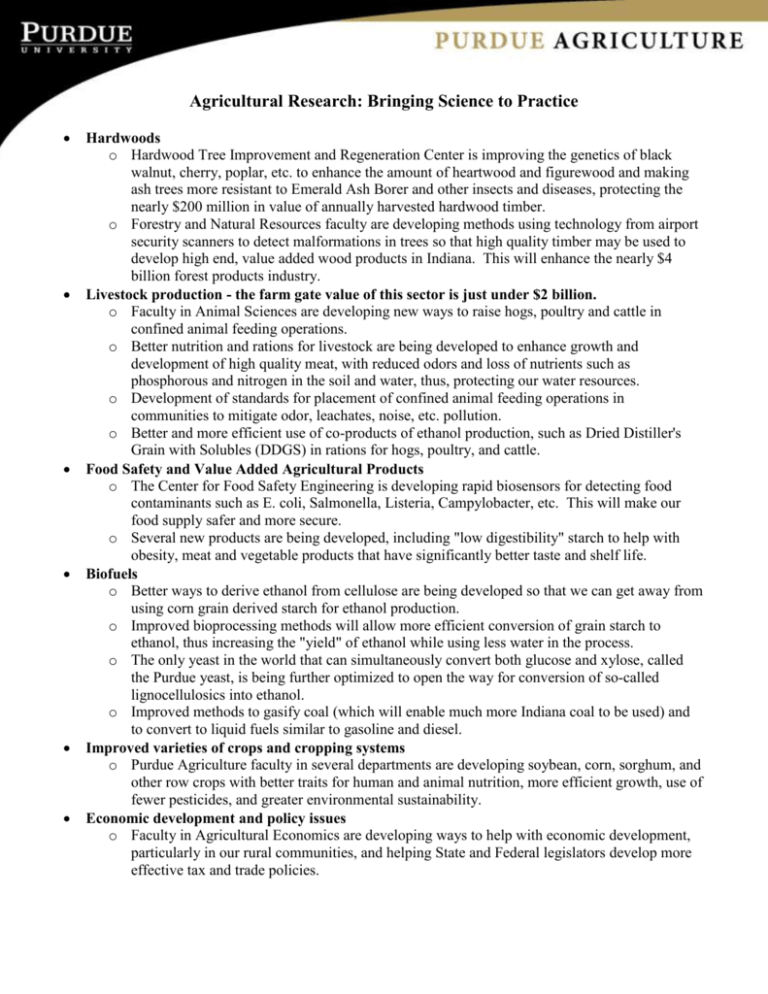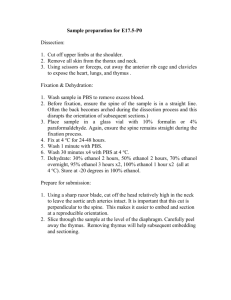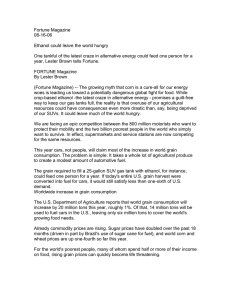Agricultural Research Talking Points
advertisement

Agricultural Research: Bringing Science to Practice Hardwoods o Hardwood Tree Improvement and Regeneration Center is improving the genetics of black walnut, cherry, poplar, etc. to enhance the amount of heartwood and figurewood and making ash trees more resistant to Emerald Ash Borer and other insects and diseases, protecting the nearly $200 million in value of annually harvested hardwood timber. o Forestry and Natural Resources faculty are developing methods using technology from airport security scanners to detect malformations in trees so that high quality timber may be used to develop high end, value added wood products in Indiana. This will enhance the nearly $4 billion forest products industry. Livestock production - the farm gate value of this sector is just under $2 billion. o Faculty in Animal Sciences are developing new ways to raise hogs, poultry and cattle in confined animal feeding operations. o Better nutrition and rations for livestock are being developed to enhance growth and development of high quality meat, with reduced odors and loss of nutrients such as phosphorous and nitrogen in the soil and water, thus, protecting our water resources. o Development of standards for placement of confined animal feeding operations in communities to mitigate odor, leachates, noise, etc. pollution. o Better and more efficient use of co-products of ethanol production, such as Dried Distiller's Grain with Solubles (DDGS) in rations for hogs, poultry, and cattle. Food Safety and Value Added Agricultural Products o The Center for Food Safety Engineering is developing rapid biosensors for detecting food contaminants such as E. coli, Salmonella, Listeria, Campylobacter, etc. This will make our food supply safer and more secure. o Several new products are being developed, including "low digestibility" starch to help with obesity, meat and vegetable products that have significantly better taste and shelf life. Biofuels o Better ways to derive ethanol from cellulose are being developed so that we can get away from using corn grain derived starch for ethanol production. o Improved bioprocessing methods will allow more efficient conversion of grain starch to ethanol, thus increasing the "yield" of ethanol while using less water in the process. o The only yeast in the world that can simultaneously convert both glucose and xylose, called the Purdue yeast, is being further optimized to open the way for conversion of so-called lignocellulosics into ethanol. o Improved methods to gasify coal (which will enable much more Indiana coal to be used) and to convert to liquid fuels similar to gasoline and diesel. Improved varieties of crops and cropping systems o Purdue Agriculture faculty in several departments are developing soybean, corn, sorghum, and other row crops with better traits for human and animal nutrition, more efficient growth, use of fewer pesticides, and greater environmental sustainability. Economic development and policy issues o Faculty in Agricultural Economics are developing ways to help with economic development, particularly in our rural communities, and helping State and Federal legislators develop more effective tax and trade policies.











